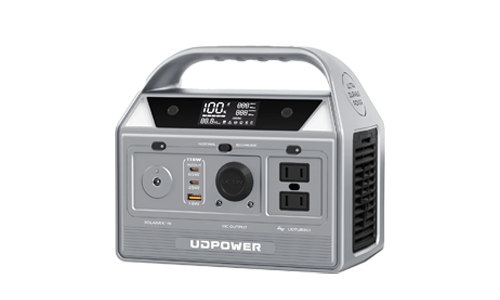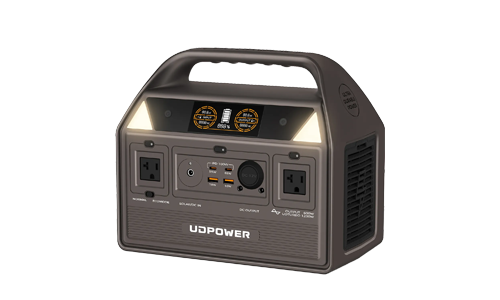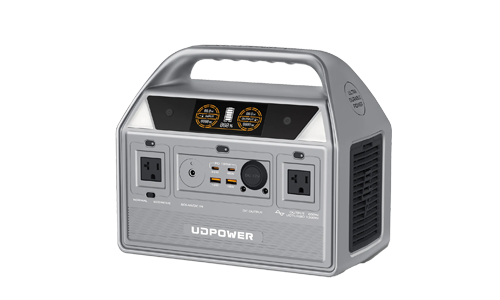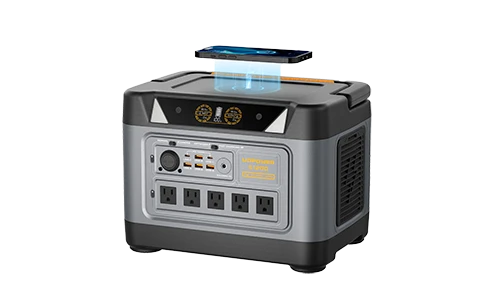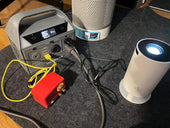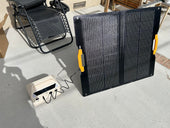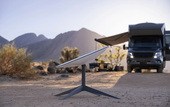10 Best Off-Grid Communities: Membership, Cost, and How to Get In
ZacharyWilliamThinking about moving off-grid—or at least spending part of the year in a low-impact, self-sufficient community? This guide walks you through 10 real off-grid and eco-communities around the world, how their membership works, what it roughly costs, and what to expect when you apply.
What Is an Off-Grid Community Today?
"Off-grid community" used to mean a remote homestead down a dirt road. In 2025, it can look like:
- A solar-powered ecovillage with its own micro-grid and shared gardens
- A 4,000-acre gated neighborhood where every home runs on solar, wind, and batteries
- A riverfront town in Belize where every house is built with off-grid utilities from day one
- A co-housing project where homes are ultra-efficient and energy bills stay under $20/month
What they share in common is a strong focus on self-reliance (especially power and water), community governance, and a lifestyle that uses far fewer resources than typical suburban living.

How Membership, Rules, and Costs Usually Work
Every community on this list has its own culture and rules, but most fall into one of these models:
1. Property-owner HOA model
Buy land or a homeYou purchase a lot or home and automatically join the owners' association. The HOA maintains roads, water systems, shared infrastructure, and sometimes off-grid power.
- Examples: Three Rivers Recreation Area (Oregon), Carmelita Gardens (Belize)
- Costs: Land/home price + annual HOA or maintenance fees
2. Ecovillage / co-housing model
Membership + homeYou enter a multi-step membership process (visit, orientation, application) and then buy or lease a home or site within the village.
- Examples: Earthaven, Dancing Rabbit, EcoVillage at Ithaca, Rachel Carson EcoVillage
- Costs: Membership fees or dues + home / lease price
3. Income-sharing community
“Everyone in, everything shared”The community owns land and assets. Members typically work a set number of hours per week and receive housing, food, healthcare and other needs instead of a salary.
- Example: Twin Oaks Community (Virginia)
- Costs: Usually no big buy-in, but you bring most income and assets into the community
Across these models, expect some mix of:
- Upfront costs: Buying a home or site, joining fees, legal costs
- Ongoing costs: Monthly dues, HOA fees, shared utilities, food co-ops
- Time costs: Meetings, workdays, shared governance, community events
10 Best Off-Grid Communities (Quick Snapshot)
Here’s a high-level look before we dive into each community’s culture, cost, and membership process. Prices are broad ranges based on recent public listings and community info; always confirm directly before making decisions.
| Community | Location | Off-Grid Style | How You Join | Typical Cost Range* |
|---|---|---|---|---|
| Greater World Earthship Community | Taos, New Mexico, USA | Earthship homes, off-grid utilities | Buy land or an existing Earthship | Mid- to high six figures for homes |
| Three Rivers Recreation Area | Central Oregon, USA | Solar/wind powered, 4,000-acre HOA | Buy a lot or home in the HOA | From modest lots to $1M+ homes |
| Dancing Rabbit Ecovillage | Rutledge, Missouri, USA | Ecovillage, strong sustainability covenants | Visitor program → residency → membership | Low buy-in; modest building / rental costs |
| Earthaven Ecovillage | Near Black Mountain, North Carolina, USA | Off-grid community power systems | Membership track + site / home purchase | Joining & commons fees + home / site |
| Twin Oaks Community | Louisa, Virginia, USA | Low-impact, income-sharing ecovillage | Three-week visitor period → membership | No big buy-in; income and labor shared |
| EcoVillage at Ithaca | Ithaca, New York, USA | Energy-efficient co-housing, partial off-grid | Membership process → rent or buy | Homes usually mid six figures |
| Emerald Earth Sanctuary | Mendocino County, California, USA | Off-grid natural-building community | Residency / work-trade / long-term stay | Small-scale; fees or co-created arrangements |
| Lasqueti Island | British Columbia, Canada | Island-wide, no connection to main power grid | Buy or build on private land | Land and homes from mid- to high six figures |
| Carmelita Gardens | Cayo District, Belize | Off-grid riverfront village | Buy or build one of the off-grid homes | Cottages from low six figures |
| Rachel Carson EcoVillage | Near Pittsburgh, Pennsylvania, USA | Efficient co-housing, very low energy use | Three-stage equity membership path | Condos and homes from mid- to upper six figures |
*Approximate, based on recent public listings and community info; subject to change.
Community Profiles: Membership, Cost, and How to Get In
1. Greater World Earthship Community (Taos, New Mexico, USA)

Greater World is the classic Earthship community just outside Taos, New Mexico. Homes are built from rammed earth and recycled materials (like tires and bottles), with integrated water catchment, greywater reuse, and solar power.
- You join by buying a lot and building an Earthship, or by purchasing an existing home.
- Community covenants shape building design, materials, and off-grid systems.
- There is an active resale market via local real-estate agents.
- Recent listings show completed Earthships in the mid- to high-six-figure range, depending on size and finish.
- Vacant lots plus a DIY or contracted build can sometimes lower total cost, but financing can be tricky for alternative construction.
- Best first step: book a tour or stay in a rental Earthship, then talk to local agents who specialize in the community.
2. Three Rivers Recreation Area (Central Oregon, USA)

Three Rivers Recreation Area (TRRA) is a 4,000-acre private, gated, off-grid community above Lake Billy Chinook in central Oregon. Hundreds of homes—from simple cabins and RV sites to multi-million-dollar houses—run on solar, wind, and generators.
- You become a member by purchasing property inside the community.
- The landowners’ association manages roads, shared amenities, and rules.
- Many owners use their homes as vacation properties; some live full-time off-grid.
- Recent listings range from basic lots and cabins in the low- to mid-six-figure range up to custom homes over $1M.
- HOA dues are typically a few hundred dollars per year, depending on lot and amenities.
- Start by searching for “Three Rivers Recreation Area” listings, then review TRRA rules and power-system requirements.
3. Dancing Rabbit Ecovillage (Rutledge, Missouri, USA)

Dancing Rabbit is a long-running ecovillage focused on radical sustainability, with strong ecological covenants that guide building methods, transportation, and energy use.
- The usual path is: visit via their Sustainable Living Visitor Program, apply for residency, then apply for membership after ~6 months.
- Members lease “warrens” (small plots) rather than owning land outright.
- Community processes emphasize consent-based governance and conflict resolution.
- Unlike many communities, there is no large buy-in fee.
- Members typically pay about 2% of income in dues plus monthly fees for co-ops and leases.
- Expect to budget for building or renting a small, efficient home and for regular visitor/residency fees while you test the fit.
4. Earthaven Ecovillage (Near Black Mountain, North Carolina, USA)

Earthaven is a forest ecovillage in the Appalachian mountains with its own off-grid power systems and strong emphasis on permaculture, village-scale infrastructure, and shared governance.
- Prospective members attend classes, visits, or work-exchange stays to learn how the village operates.
- Membership involves a joining fee and a commons fee, plus annual dues to support shared infrastructure.
- Members typically hold a long-term lease or ownership interest in a neighborhood within the village.
- Costs combine one-time joining/commons fees with ongoing dues and neighborhood-level costs.
- Housing ranges from simple cabins and tiny homes to more conventional houses built to village standards.
- The village website outlines current fees, visitor programs, and the membership process step by step.
5. Twin Oaks Community (Louisa, Virginia, USA)

Twin Oaks is one of the oldest secular intentional communities in North America. It isn’t fully off-grid, but it dramatically reduces per-person resource use through income sharing, communal ownership, and shared infrastructure.
- Prospective members must attend a three-week visitor period.
- If both you and the community feel it’s a fit, you can apply for provisional and then full membership.
- Members work roughly 40 hours a week in community businesses and domestic labor instead of earning a salary.
- There is no purchase price to join and no equity when you leave; the community covers housing, food, and basics.
- You may need savings for personal travel, outside obligations, or a future transition out of community life.
- Because there’s often a waiting list, you should plan ahead and be flexible on timing.
6. EcoVillage at Ithaca (Ithaca, New York, USA)

EcoVillage at Ithaca (EVI) combines co-housing, organic farms, and energy-efficient design on a hill above the city of Ithaca. It’s more “low-energy” than fully off-grid, but it’s a major model for sustainable neighborhood design.
- To rent or buy in the village, you must complete a membership process that includes visits, orientation, and community meetings.
- Homes are clustered into neighborhoods with common houses and shared outdoor spaces.
- Residents participate in shared meals, governance, and work teams.
- Resales typically fall in the mid-six-figure range, varying with size and location in the village.
- Rentals appear periodically; completing membership early helps you be ready when something opens.
- Visit the village site for current listings, tours, and membership documents.
7. Emerald Earth Sanctuary (Mendocino County, California, USA)

Emerald Earth Sanctuary is a small intentional community and education center in the California redwoods, known for natural building, earthen floors, and demonstration projects in off-grid design.
- The community is off-grid, using solar and hydro electricity, composting toilets, and greywater systems.
- Resident members care for the land and host workshops and farm stays.
- Emerald Earth has gone through phases of “hibernation” and re-visioning, so opportunities change over time.
- Joining is less about buying a suburban-style home and more about co-creating life on site.
- Costs may involve program fees, work-trade, or negotiated contributions rather than a standard purchase price.
- Best approach: apply for a farm stay, workshop, or internship and talk directly with residents about longer-term options.
8. Lasqueti Island (British Columbia, Canada)

Lasqueti Island is famous for having no connection to the North American electrical grid. Around 400 residents rely on solar, wind, generators, and wood heat while living surrounded by forest and ocean.
- This is a normal rural community, not a single formal organization.
- You “join” by buying or building a home, and by integrating socially with long-term residents.
- Services are limited; many people homeschool, run remote businesses, or work seasonally.
- Property prices vary widely but generally fall in the mid- to high-six-figure range for land and homes.
- Factor in costs for boats, ferries, and more complex supply logistics.
- Visit multiple times in different seasons before committing; winters and storms can be very different from summer visits.
9. Carmelita Gardens (Cayo District, Belize)

Carmelita Gardens is a riverfront village in Belize built around the motto “Independent Together.” Homes are designed for off-grid solar power, rainwater catchment, and eco-friendly septic systems, while residents still enjoy high-speed internet and community amenities.
- You join by purchasing a lot or a turnkey off-grid home from the developer or current owners.
- Residents are independent homeowners but share a common village vision and amenities.
- It’s popular with North Americans looking for a warm-weather, lower-cost off-grid lifestyle.
- Developer information and buyer reports indicate small off-grid cottages starting around the low US$100,000s, with larger homes higher.
- Factor in immigration status, healthcare, and tax planning for an international move.
- The typical path is: schedule a discovery visit, tour available homes, and explore residency options in Belize.
10. Rachel Carson EcoVillage (Near Pittsburgh, Pennsylvania, USA)

Rachel Carson EcoVillage is a new co-housing community being developed near Pittsburgh, built to high-efficiency standards with very low energy use, sociocratic governance, and a strong ecological mission.
- The village uses a three-stage equity membership path to help you get to know the community.
- Homes are being offered at cost, with no developer profit built into the sale price.
- Governance is sociocratic, emphasizing consent-based decision making and shared responsibility.
- Public information shows studio-scale units in the mid-six-figure range, with larger homes higher.
- Monthly fees are designed to cover maintenance, reserves, and very low utility costs.
- If you’re interested, join an info session, complete the membership steps, and then reserve a unit when available.
How to Choose the Right Off-Grid Community for You
Before packing your life into a van, it helps to get honest about what you actually want—and what you can realistically offer.
- Start with your non-negotiables. Climate, distance to family, medical access, schooling options, and internet quality all matter.
- Be honest about your social bandwidth. Some communities expect frequent meetings and shared meals; others are “wave to your neighbor” quiet.
- Factor in your earning situation. Can you work remotely? Will you need off-grid-friendly income (trades, farming, childcare, local services)?
- Test drive, don’t impulse-move. Take at least one longer trial stay (2–6 weeks) at any community you’re serious about.
- Ask about exit scenarios. How easy is it to sell your home or share? What happens if circumstances change?
Two great directories for continuing your research are the Global Ecovillage Network and the Foundation for Intentional Community. Use them to find smaller or newer communities that may fit your exact niche.
Why Portable Power Stations Matter for Off-Grid Life
Whether you’re visiting communities, living in a van while you scout land, or finally moving into your off-grid home, reliable portable power is a huge stress-reducer. It lets you keep essentials running even if the community’s main system is limited, under maintenance, or reserved for critical loads.
That’s where compact portable power stations come in. For example, UDPOWER’s LiFePO₄ lineup is built around long cycle life and real-world use cases like CPAP backup, internet routers, and small appliances:
- UDPOWER C200: ~192Wh, 200W inverter, only about 5.4 lb. Great as a “personal outlet” for phones, cameras, and a small fan on scouting trips.
- UDPOWER C400: 256Wh LiFePO₄ with 400W rated output (up to 800W surge). Ideal for laptops, camera batteries, lights, and a small 12V fridge at a visitor cabin.
- Both are small enough to fly or road-trip with, and charge from wall, car, or solar.
- UDPOWER C600: 596Wh LiFePO₄, 600W rated output, 1,200W surge, with AC outlets, USB-C, USB-A, and 12V car output.
- Enough to run a mini-fridge, router, lights, and laptop together—or a CPAP machine all night.
- Paired with two 120W UDPOWER solar panels, it can recharge during the day while you work or join work parties.
- UDPOWER S1200: ~1,190Wh LiFePO₄ battery, 1,200W inverter (up to 1,800W surge), designed as a small “power hub.”
- Multiple AC outlets, high-power USB-C, USB-A, DC ports, and even wireless charging make it easy to run lights, a laptop setup, Starlink, a fridge, and tools.
- Supports high-speed AC charging and up to 400W solar input, so you can top it up from a community grid, your own panels, or both.
In many off-grid communities, bringing your own portable power station is considered good etiquette: you’re less dependent on shared systems and can keep your own essentials running without overtaxing limited infrastructure.
If you’re exploring multiple communities across the U.S., a mid-size unit like the C600 or S1200 plus a 120W foldable solar panel is a flexible, travel-friendly starting point.
Off-Grid Community FAQs
Is it legal to live off-grid in the United States?
Generally yes, but the details depend on local zoning, building codes, and health regulations. Many counties allow fully off-grid homes if you meet requirements for septic, structures, and safety. Others require some form of grid connection or impose strict rules on tiny homes, RVs, or alternative systems.
Always check county and state rules before purchasing land, and talk to neighbors who have already built off-grid in that area.
How much money do I really need to join an off-grid community?
It varies enormously. Some income-sharing communities ask for minimal buy-in but require you to share labor and income instead of equity. Others sell high-end off-grid homes for $500,000 or more. A rough spectrum:
- Lower-cost paths: visitor programs, work-exchange, renting a room or cabin while you test the fit.
- Mid-range paths: buying a small cottage or modest home in an off-grid HOA or village.
- Higher-end paths: custom Earthship or new-build co-housing units in popular regions.
If you’re not sure yet, start with the communities that have low buy-in and strong visitor programs. You’ll learn quickly what lifestyle and cost level fits you.
Can I bring kids to an off-grid community?
Many communities welcome families, but you’ll need to ask specifically about schooling, safety, healthcare access, and other kid-focused issues. Some ecovillages have on-site learning programs or nearby schools; others are very remote.
Ask to talk with current parents in the community—they’ll give you the most honest picture of daily life with kids.
How do I find off-grid communities near me?
The two most useful tools are:
- The Foundation for Intentional Community’s online directory (great for U.S. and Canada).
- The Global Ecovillage Network (GEN), which maps communities worldwide.
Then, search for “[your state] off-grid community” and cross-check any place you find with those directories, plus the community’s own website.
Do I need special skills to join an off-grid community?
You don’t need to be a master homesteader, but communities love people who can contribute. Useful skills include gardening, carpentry, basic electrical knowledge, childcare, elder care, cooking, administration, conflict resolution, and remote work that brings in stable income.
Soft skills matter just as much as hard skills: showing up, communicating clearly, and being willing to learn.
What if I move in and later decide community life isn’t for me?
That’s exactly why most communities encourage one or more trial stays before you commit. In property-based communities, your exit path is usually selling or renting out your home or share. In income-sharing communities, you may leave with less financial equity but a lot of lived experience.
Plan for that possibility from the beginning: avoid over-extending financially, keep your professional skills current, and maintain relationships outside the community as well.


